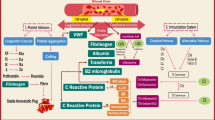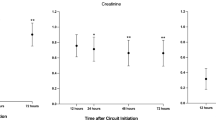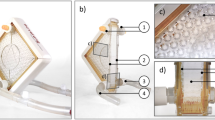Abstract
Hollow fiber membranes have been widely used for extracorporeal blood treatment ranging from an artificial kidney, plasmapheresis to oxygenator. In particular, the artificial kidney is currently an established therapeutic modality for renal failure. Hitherto, various hollow fiber membranes have been developed and become commercially available, and thus in Japan alone about 15 million-m2 hollow fiber membranes have come to be used a year. In view of such a trend, many studies are being carried out to elucidate the interactions between the membrane and blood, such as antithrombogenicity or complement activation. In addition, modification of membranes is being investigated in order to prevent complications of long-term dialysis patients. The hollow fiber membrane is also employed in therapeutic plasmapheresis which aims to treat intractable diseases by removing pathogenic macromolecules in plasma. There are several clinical procedures which enable selective removal of harmful substances in blood with a combination of some membranes of different pore sizes. The membrane oxygenator consisting of microporous, hydrophobic hollow fibers is routinely used as a temporary alternative to the patient lung during open-heart surgery. The membrane method is considered to be superior to the conventional bubble type oxygenator because of less deleterious effects on blood components. Also, extracorporeal membrane oxygenation has been developed as a long-term assist in the treatment of respiratory insufficiency patients.
Similar content being viewed by others
Log in or create a free account to read this content
Gain free access to this article, as well as selected content from this journal and more on nature.com
or
References
K. Sakai and M. Mineshima, Kagaku Kogaku, 45, 158, (1981).
A. Saito, H. Naito, and M. Hirohata, Progress in Artificial Organs, 412 (1981).
F. Gejyo, T. Yamada, and S. Odani, Biophys. Res. Commun., 129, 701 (1985).
H. Naito, T. Miyazaki, T. Takagi, A. Sueoka, S. Takashima, A. Kubotsu, and Y. Inukai, Jpn. J. Artif. Organs, 16(2), 763 (1987).
A. Sueoka and H. Naito, the 7th World Congress of the International Society for Artificial Organs, Sapporo, Oct. 1–4, 1989.
H. Naito, T. Miyazaki, A. Kubotsu, S. Takashima, K. Takakura, and M. Kawahashi, Jpn. J. Artif. Organs, 14(1), 45 (1985).
K. Kino, K. Iizuka, K. Shishido, E. Kinugasa, T. Akizawa, T. Kitaoka, S. Koshikawa, A. Kishida, and Y. Ikada, Jpn. J. Artif. Organs, 19(2), 731 (1990).
K. Ishihara, T. Ueda, and N. Nakabayashi, Polym. J., 22, 355 (1990).
Y. Mito, A. Nishimura, A. Sumiyoshi, M. Kawai, Y. Nose, Y. Kawamura, and C. Yoshimoto, Sogoigaku, 17, 86 (1960).
L. S. Kaplow and J. A. Goffinet, JAMA, 203, 1135 (1968).
P. R. Craddock, J. Fehr, A. P. Dalmasso, K. L. Brigham, and H. S Jacob, J. Clin. Invest., 59, 879 (1977).
D. E. Chenoweth, “Hypersensitivity in Hemodialysis”. ISAO Press, Cleveland, 1984, p11.
T. Akizawa, Jpn. J. of Clinical Diaysis, 4(7), 1009 (1988).
T. Bosch, Clin. Nephrol, 26 (Suppl. 1), 22 (1986).
T. Akizawa, T. Kitaoka, S. Koshikawa, T. Watanabe, K. Imamura, T. Tsurumi, Y. Suma, and S. Eiga, Trans. Am. Soc., Artif. Intern. Organs, 32, 76 (1986).
A. Saito, H. Ogawa, T. Takagi, K. Ohta, H. Akasu, S. Kawai, and A. Kubotsu, Trans. Am. Soc., Artif. Inter. Organs, 29, 673 (1983).
K. Sakai, T. Muroi, K. Ozawa, S. Takesawa, M. Tamura, and T. Nakane, Trans. Am. Soc., Artif. Intern. Organs, 32, 397 (1986).
P. Kramer, J. Bohler, A. Kehr, H. Grone, J. Schrader, D. Mattaei, and F. Scheler, Trans. Am. Soc., Artif. Intern. Organs, 28, 28 (1982).
T. Agishi, H. Amemiya, K. Ota, and N. Sugino, “Plasmapheresis. New Trends in Therapeutic Application”. ISAO Press, Cleveland, 1983, p127.
A. Sueoka, T. Miyahara, K. Takakura, and Y. Ueda, Jpn. J. Artif. Organs, 14(1), 413 (1985).
P. S. Malchesky, Y. Asanuma, I. Zawicki, M. Blumenstein, L. Calabrese, A. Kyo, R. Krakaur, and Y. Nose, Artif. Organs, 4, 205 (1980).
P. S. Malchesky, J. Wojcicki, T. Horiuchi JM. Lee, and Y. Nose, “Plasmapheresis. New Trends in Therapeutic Applications”. ISAO Press. Cleveland, 1983, p51.
Y. Takeyama, T. Horiuchi, and M. Yamashita, P. S. Malchesky, and Y. Nose, Trans. Am. Soc., Artif. Intern. Organs, 33, 366 (1987).
T. Teraoka, J. Goldcamp, Y. Abe, T. Matsugane, E. Blasutig, J. Smith, P. Malchesky, and Y. Nose, Trans. Am. Soc., Artif. Intern. Organs, 30, 347 (1984).
K. Takayama, T. Taira, Y. Nakashima, K. Tamura, E. Kinugasa, T. Akizawa, T. Kitaoka, and S. Koshikawa, Jpn. Artif. Organs, 14(1), 344 (1985).
P. S. Malchesky and Y. Nose, Seminars in Hematology, 26 (2), Suppl. 1 (April), 42 (1989).
F. Nomura, H. Hirose, H. Matsuda, S. Nakao, T. Sakakibara, M. Kaneko, Y. Sasako, Y. Miyamoto, K. Kadoba, S. Ohtake, T. Miura, E. Covino, and Y. Kawashima, Jpn. J. Artif. Organs, 14(3), 1645 (1985).
J. Kamo, E. Hamano, I. Santo, A. Nakajima, K. Kamada, T. Yoshihara, Y. Fukui, and T. Kawamura, Jpn. J. Artif. Organs, 14(3), 1637 (1985).
H. Akasu and T. Anazawa, J. Jpn. Soc. Biomaterials, 8(3), 141 (1990).
J. D. Mortensen and G. Berry, Int. J. Artif. Organs, 12(6), 384 (1989).
Author information
Authors and Affiliations
Rights and permissions
About this article
Cite this article
Sueoka, A., Takamura, K. Hollow Fiber Membrane Application for Blood Treatment. Polym J 23, 561–571 (1991). https://doi.org/10.1295/polymj.23.561
Issue date:
DOI: https://doi.org/10.1295/polymj.23.561
Keywords
This article is cited by
-
Surface modification of PAN hollow fiber membrane by chemical reaction
Fibers and Polymers (2015)



